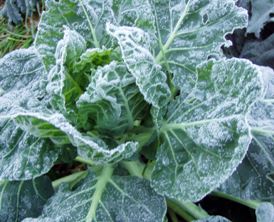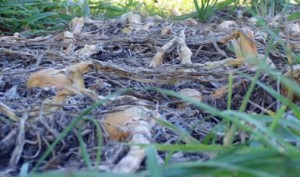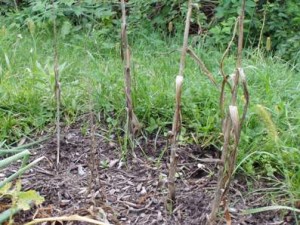 I feel that as a public service, I have to tell you something: Sometimes, you just have to do things because they are good for you. You may learn to like them later.
I feel that as a public service, I have to tell you something: Sometimes, you just have to do things because they are good for you. You may learn to like them later.
That is the way it is with kale. Just eat it. Find a way to eat it that works for you, but eat it. The nutritional benefits of this vegetable are just so huge; if you can’t bring yourself to eat any other green veggie or leafy green, eat kale. (no, I am not on the payroll of the American Kale Conference or the National Kale Board or whatever lobbying group they have; as a matter of fact, that might be part of the problem. I don’t think anyone is actually doing PR for the vegetable)
OK. Housekeeping. What IS kale?
Kale is a member of the cabbage family (Brassica oleracea Acephala Group) and because it’s leaves do not form a head, it is considered to be closer to the ancestors of cabbage than any other member of the family.
In its current state of development (you can get flat and curly leafed varieties), this is a vegetable which has been around for thousands of years and is documented as being eaten by Romans in the 4th Century B.C.
 Advantages of Kale
Advantages of Kale
If you are a gardener in the northern part of the US, kale is something that you can start early, eat all summer, keep into the fall and even eat after it’s gotten a hard frost. As a matter of fact, the sugars in the plant actually are accentuated by frost, so this is an advantage in terms of having a fresh veggie out of the garden after everything else has seemingly been killed off. . . .
Kale freezes well. Kale will keep under the snow. I have dug up kale for dinners in January out of the snow. It is firm, green, crunchy and juicy. During the winter, when getting fresh veggies (except for those being trucked in from places like Florida, California and Texas) can be iffy, having kale out in the ‘deep freeze’ is definitely worth it. (more…)
 Well, it’s January 2 and I’ll bet there are already a lot of people out there who are despairing of keeping any sort of New Year Resolutions. It’s ok – you are not a bad person and frankly, there is no reason to drag those resolutions around like some sort of anvil for the rest of the year if you know, deep in your heart of hearts that it’s sort of a waste.
Well, it’s January 2 and I’ll bet there are already a lot of people out there who are despairing of keeping any sort of New Year Resolutions. It’s ok – you are not a bad person and frankly, there is no reason to drag those resolutions around like some sort of anvil for the rest of the year if you know, deep in your heart of hearts that it’s sort of a waste.







